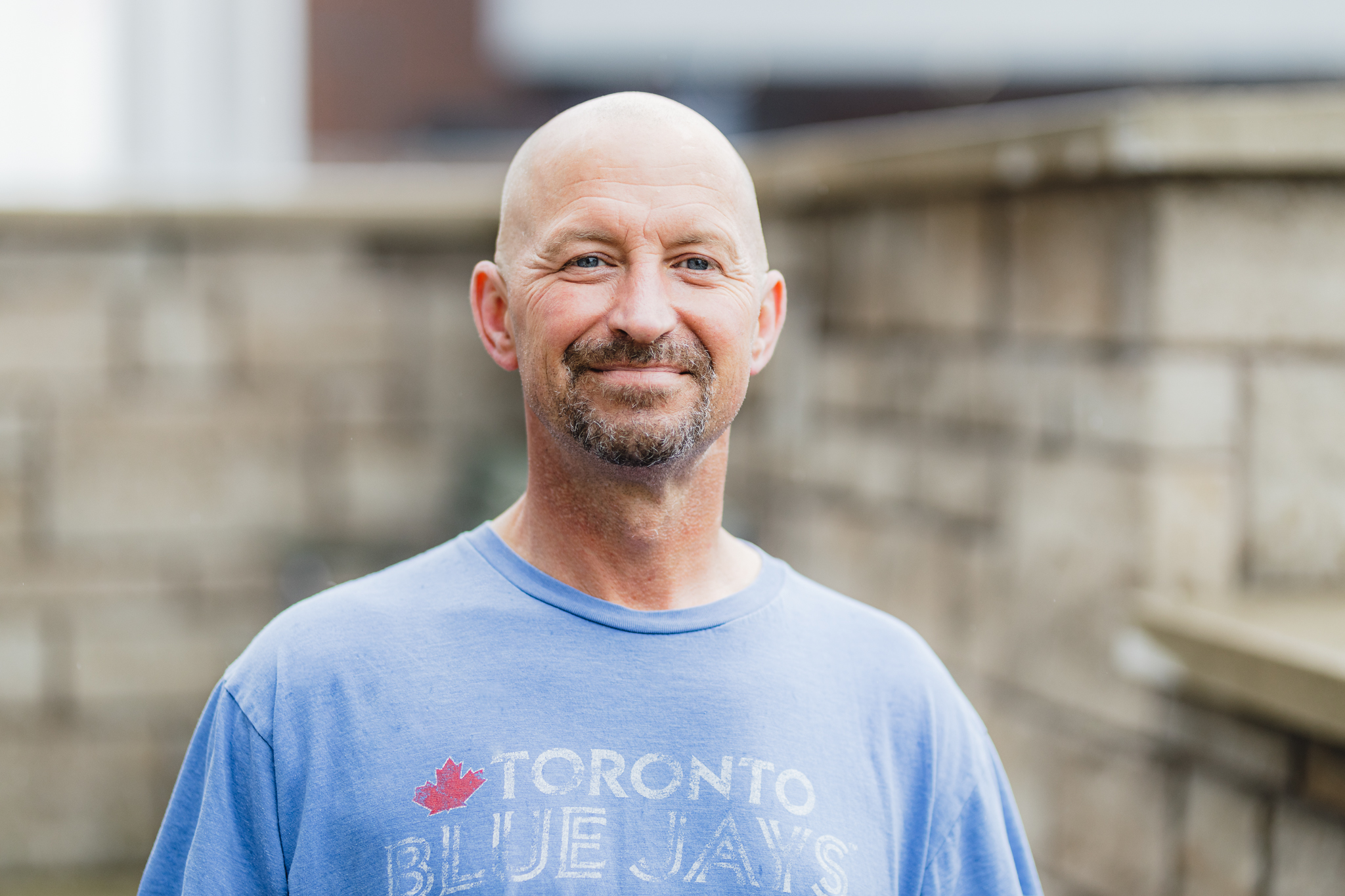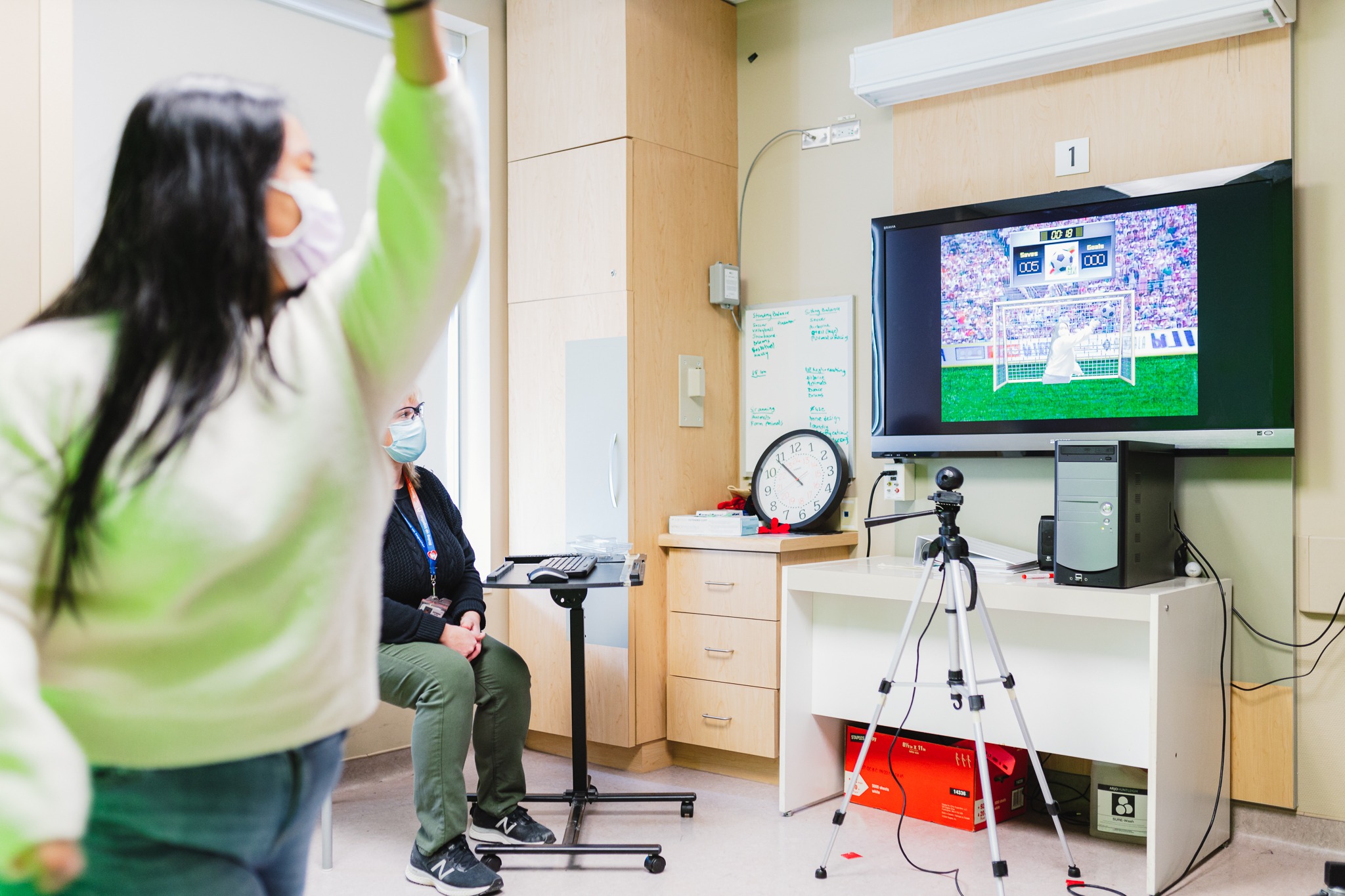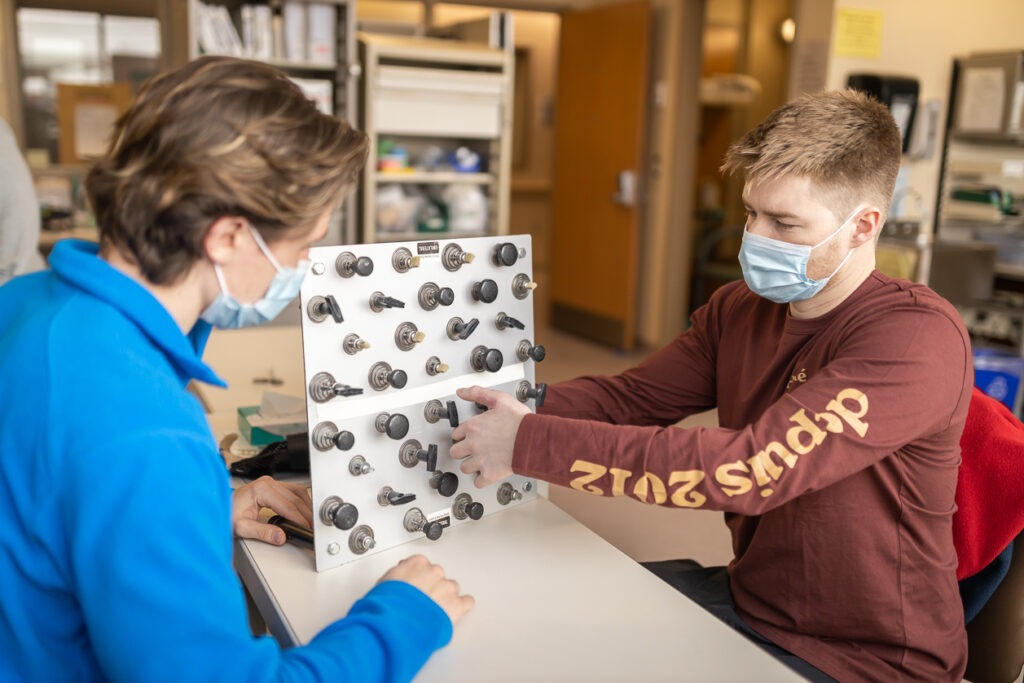
Hand therapy plays key role in road to recovery
HHS Hand Clinic helps burn patient

Hand Clinic patient Stuart Farintosh
Hamilton Health Sciences (HHS) operates the largest hand therapy clinic in the region. Our Hand Clinic, located at the HHS Regional Rehabilitation Centre, treats patients who are recovering from hand surgery or have serious traumatic hand injuries.
Care is provided by physiotherapists (PTs), occupational therapists (OTs), and PT/OT assistants with advanced training in treating hands.
“Hand therapy is the perfect combination of science, critical thinking and creativity.”
Hamilton Health Sciences (HHS) patient Stuart Farintosh hopes to regain the use of his left hand with help from our Hand Clinic team.
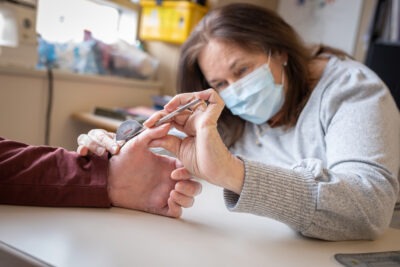
Occupational therapist Pam Ball takes range-of-motion measurements to check Stuart Farintosh’s progress. Measurements help determine the most appropriate treatments.
The linesman was injured last September while performing upgrades on a section of power lines in Huron County. During the scheduled outage a wire he was holding became unintentionally energized at 4,800 volts.
“That’s 40 times that of a standard household outlet,” says Farintosh. “Every muscle in my body locked up as I felt waves of pain crash over me before everything went dark.”
He was airlifted to HHS Hamilton General Hospital and admitted to the burn unit. There he underwent multiple surgeries to repair arteries and tendons, and have skin grafts.
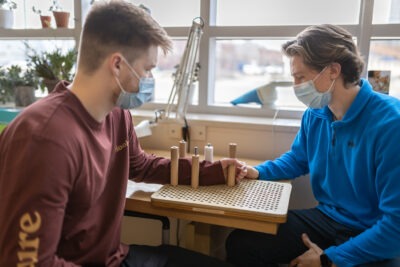
This board provides a gentle, prolonged stretch to help increase wrist motion that’s very tight due to scarring. Patient Stuart Farintosh (left) is helped by occupational therapy/physiotherapy assistant Philip Lucek.
“I’d like to thank all of the doctors, nurses and staff who helped assist me in my recovery,” says a grateful Farintosh, whose rehabilitation includes treatment at the Hand Clinic.
While Farintosh has overcome many challenges caused by his injuries, he still has extensive damage to his hand which will require many months of therapy and additional surgeries to help heal nerves, muscles and other tissues.
“I have very limited use of my hand,” says Farintosh, who every day practises hand therapy exercises he learns at the Hand Clinic. “I can’t make a fist or move my fingers yet, but through hand therapy and a recent surgery to help improve my hand function, I’m hoping to progress.”
A helping hand
Typical Hand Clinic patients include people recovering from fractures, burns, nerve injuries, tendon injuries, amputations and even hand reattachment. About 90 per cent of patients are referred by plastic surgeons, with the remaining 10 per cent from orthopedic surgeons, says Pam Ball, an HHS registered OT with over 30 years of experience in hand therapy.
The team works with patients to lessen impairments like stiffness, swelling, pain, loss of strength, reduced sensation or overactive sensation, and scar tissue formation while also working to improve function.
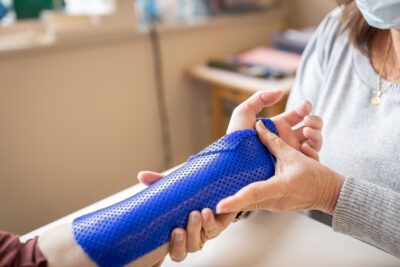
Occupational therapist Pam Ball moulds a custom thermoplastic splint. It’s worn at night to help patient Stuart Farintosh maintain the gains he’s made during therapy.
“I love this work.” — Pam Ball, HHS occupational therapist
“Hand therapy is the perfect combination of science, critical thinking and creativity,” says Ball, whose patients include Farintosh.
“I dedicated my career to hand therapy because I find this work to be extremely rewarding. Our goals include helping patients get back to activities that are important to them, and I really enjoy helping our patients on their road to recovery.”
Ball is working with Farintosh to help improve his range of motion, reduce pain and swelling, and manage scarring since scar tissue can reduce mobility and limit range of motion.
“Scarring can also be hypersensitive and uncomfortable, which prevents people from using their hand to its maximum potential,” says Ball.
Patients are taught exercises and techniques so that they can continue daily therapy at home. “Typically, hand therapy needs to take place multiple times a day, every day,” says Ball.
“A lot of what we spend our time on is patient education. It’s extremely rewarding to see patients learn these techniques so that they can continue to improve as we work together on their recovery journey.”

